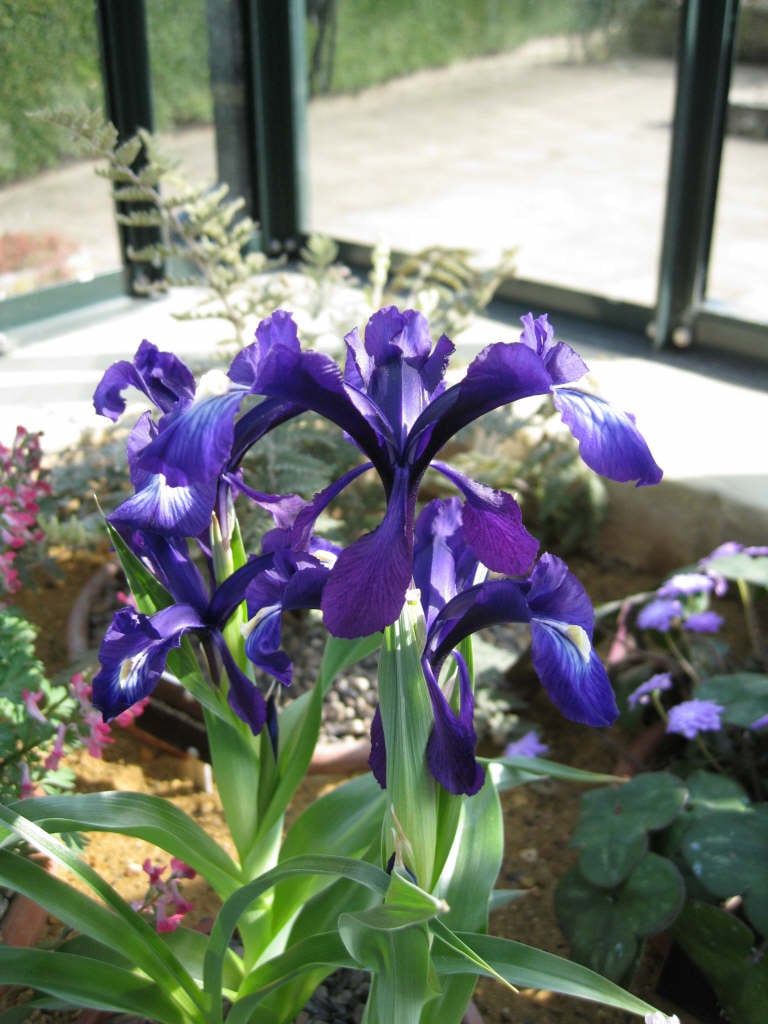Iris aucheri
Aucher-Eloy iris
A bulbous herbaceous perennial to 30cm in height, with narrow, crowded leaves and 2-3 flowers 5-7cm in width, the petals pale or deep violet-blue or white, with a central yellow ridge on the falls

Buy this plant
Size
Ultimate height
0.1–0.5 metresTime to ultimate height
2–5 yearsUltimate spread
0–0.1 metreGrowing conditions
Moisture
Well–drainedpH
Alkaline, NeutralColour & scent
| Stem | Flower | Foliage | Fruit | |
| Spring | Blue White | Green | ||
|---|---|---|---|---|
| Summer | ||||
| Autumn | ||||
| Winter | Blue White | Green |
Position
- Full sun
Aspect
South–facing or East–facing
Exposure
Exposed or Sheltered Hardiness
H4Botanical details
- Family
- Iridaceae
- Native to GB / Ireland
- No
- Foliage
- Deciduous
- Habit
- Clump forming
- Potentially harmful
- Harmful if eaten. Wear gloves and other protective equipment when handling. Pets: Harmful if eaten. For further information and contact numbers regarding pets, see the HTA guide to potentially harmful plants
- Genus
Iris may be rhizomatous or bulbous perennials, with narrow leaves and erect stems bearing flowers with 3 large spreading or pendent fall petals, alternating with 3 erect, often smaller, standard petals, in late winter, spring or early summer
- Name status
Correct
- Plant range
- SW Asia to Himalaya
How to grow
Cultivation
Grow in well-drained, neutral to slightly alkaline soil in full sun. When planting take care not to damage the fleshy roots. Or grow in a container under glass
Propagation
Propagate by division of bulb offsets
Suggested planting locations and garden types
- City and courtyard gardens
- Coastal
- Cottage and informal garden
- Flower borders and beds
- Wall side borders
Pruning
Remove any dying foliage in autumn, old flower stems can be cut down after flowering
Pests
Diseases
May be susceptible to aphid-borne viruses, bacterial soft rot and grey moulds; see Iris diseases
Get involved
The Royal Horticultural Society is the UK’s leading gardening charity. We aim to enrich everyone’s life through plants, and make the UK a greener and more beautiful place.